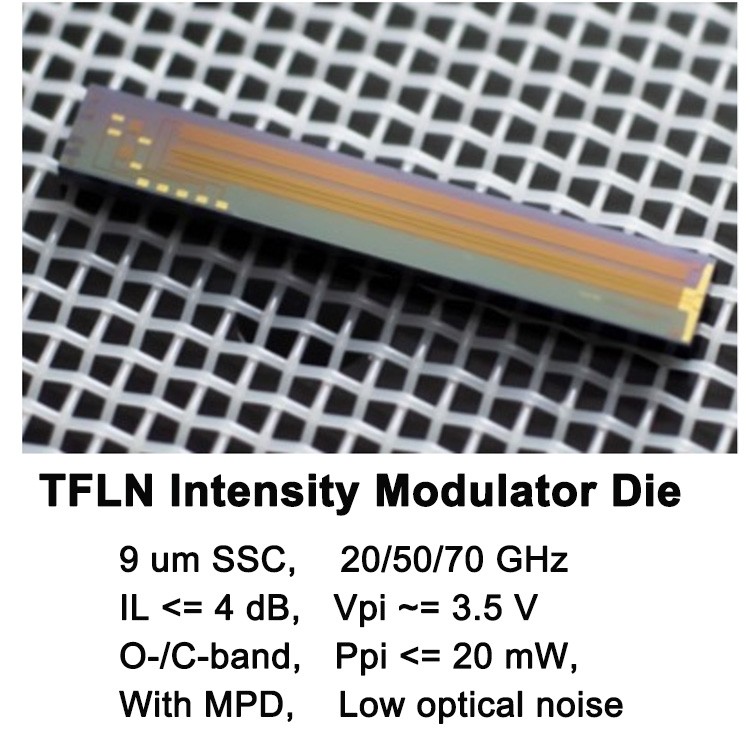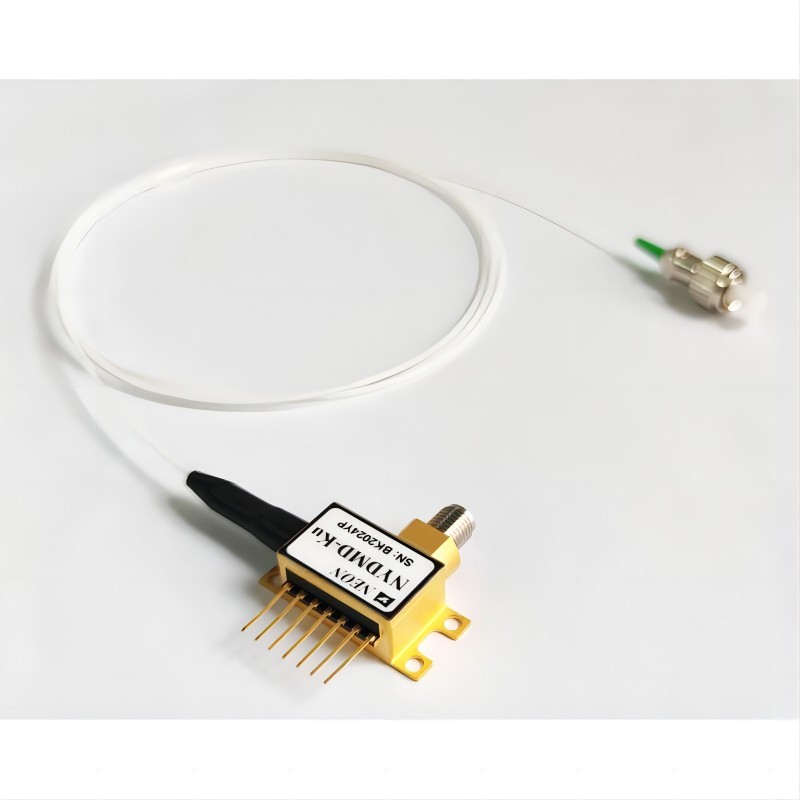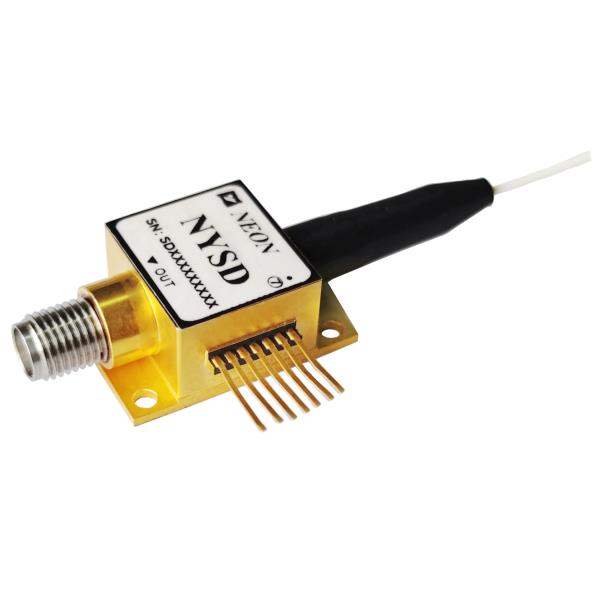High Speed Optical Modulator: Everything You Need to Know
With the rapid expansion of optical communications, data center interconnects, and photonics technology, high-speed optical modulators are now fundamental building blocks in today’s optical systems. Not only do they enable ultra-fast data transfer but also play a very important role in applications such as LiDAR, optical sensing, and quantum communication. This article provides a comprehensive treatment of high-speed optical modulators, providing relevant insights for a better insight into the devices.
Part 1. What is a High-Speed Optical Modulator?
A high-speed optical modulator is an optoelectronic device that is capable of modulating light signals at a high speed. It primarily functions as an optical signal, translating electric signals into optical signals to transmit information by modulating the intensity, phase, or polarization of light. Compared to direct light source modulation, high-speed optical modulators offer larger bandwidth, less distortion of signals, and higher stability.
For high-speed Internet access, data center interconnections, and photonics investigations, the modulators in contemporary optical communication systems can deliver signal transmission at several tens or several hundreds of gigahertz, supplying dependable support for advanced communication needs and protocol underpinning the communication of modules in photonic systems.
Examples of such devices are thin-film lithium niobate (TFLN), which, for the high-speed optical modulators, has been the main technological solution in the receiving terminal for optical-enabled rather advanced communication modules owing to the low loss, high bandwidth, and positive disparate electro-optic attributes of the modulator.
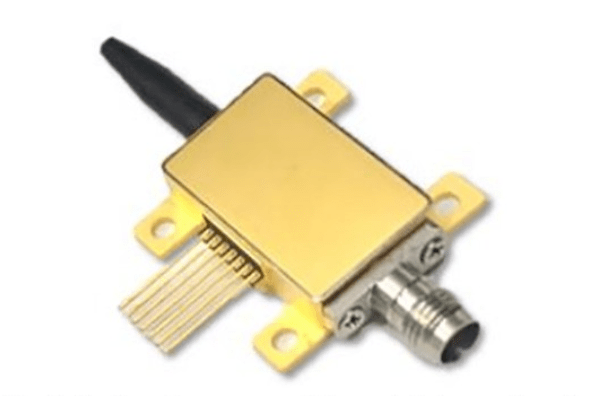
Part 2. Working Principle of High-Speed Optical Modulators
The basic operating principle of optical modulators at high speeds is usually based on the Mach-Zehnder interferometer (MZM) or the electro-optic effect. Taking the MZM as an example, the input light is split into two separate interferometer arms.
An electrical signal is applied to one of the arms, changing the phase of light traveling through it. When the two beams of light are recombined, the interference generated due to the phase difference modulates the optical signal.
Thin-film lithium niobate (TFLN) is the core material in this process due to its extremely low optical loss and highly high modulation bandwidth, which makes modulators capable of supporting 100 GHz or higher data transmission. TFLN modulators are also small, of lesser weight, and require relatively lower driving voltage, and therefore, they are highly well suited to integrated photonics systems as well as data center uses.
Part 3. Applications of High-Speed Optical Modulators
High-speed optical modulators are versatile tools that are equally significant in an enormous range of industries. By controlling light signals at extremely high speeds, they enable advanced communications, sensing, and research. The following sections elaborate on the most significant fields where these modulators have widespread applications:
Optical Communication Systems
High-speed optical modulators are central components of fiber-optic communication networks. They enable the long-distance transmission of high-speed data at low latency, supporting applications such as 5G networks, cloud computing infrastructure, and hyperscale data centers. By offering precise and high-speed modulation of optical signals, these modulators offer stable and efficient interconnects in modern high-capacity networks.
LiDAR (Light Detection and Ranging):
In autonomous driving, robotics, and industrial ranging applications, high-speed optical modulators are utilized for switching light pulses with extremely high precision. This allows for higher spatial resolution, faster scanning rate, and higher distance measuring accuracy of LiDAR systems, which are imperative to facilitate safe navigation and accurate environmental mapping.
Optical Sensing and Metrology
High-speed modulators have extensive usage in precision measurement systems. Modulating the light signals, they provide highly sensitive measurement of physical parameters like strain, temperature, and pressure. Due to this reason, they are of prime importance used in applications like structural health monitoring, industrial process control, and scientific instrumentation.
Photonics Research and Quantum Communication
In advanced photonics research, high-speed modulators are the key factor in controlling quantum light sources and enabling quantum key distribution (QKD). They play a crucial role in ultrafast signal manipulation experiments involving high-fidelity photon encoding and low-noise operation, thus propelling future quantum communication and information processing technology.

Part 4. Key Considerations for Selecting a High-Speed Optical Modulator
With selecting a high-speed optical modulator, certain critical factors need to be carefully considered to ensure optimal system performance:
Bandwidth and Data Rate
The modulator must be capable of supporting the system’s data rate needed. Increased bandwidth enables faster modulation of signals, which is needed for high-speed optical communication, data center interconnect, and intricate photonics experiments.
Insertion Loss and Signal Integrity
Low insertion loss is crucial to reduce signal loss and provide high-quality transmission. Signal integrity modulators minimize distortion and preserve optical signal fidelity, especially for applications in long-distance communications and high-accuracy measurement systems.
Driving Voltage
Decreased driving voltage reduces power consumption and facilitates integration into compact photonics systems. This is also especially applicable to large-scale deployment and usage where energy efficiency is an issue.
Package Size and Compatibility
Physical dimensions and interface compatibility of the modulator should be similar to current optical platforms and system architectures. Small and standardized packaging facilitates easier integration and system reliability maintenance.
Material and Reliability
Material choice directly affects performance and stability over the long term. Thin-film lithium niobate (TFLN) is widely used because it possesses low optical loss, high electro-optic efficiency, thermal stability, and anti-aging capability. Stable materials ensure repeatable modulation performance, reduce maintenance needs, and extend overall system life.
Diligent assessment of these factors not only optimizes optical communications performance but also optimizes system lifespan and lowers operating costs, so the selection process becomes a focal point of creating high-performance photonics devices and optical networks.
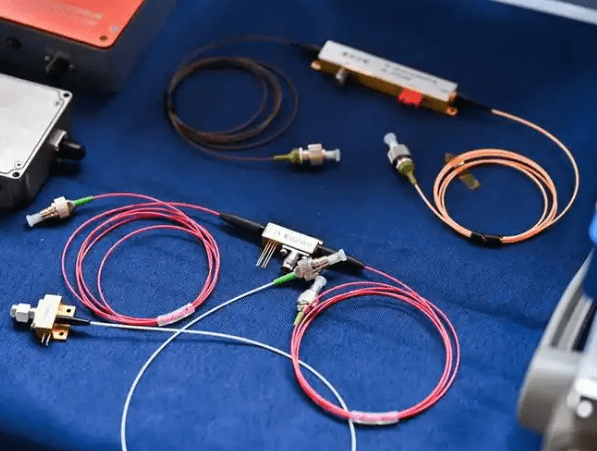
Part 5. Future Development Trends of High-Speed Optical Modulators
There are quite a number of primary trends that future high-speed optical modulators are characterized by. Technological advancements in thin-film lithium niobate (TFLN) will further advance modulation bandwidth and efficiency, and photonic integration, placing modulators on the same chip with lasers and detectors, will enable more compact and stable systems.
In parallel, miniaturization and power saving will address data center and mobile optical network demands, while high-bandwidth, multi-purpose modulators that can handle multi-wavelength and multi-mode signals will address the growing sophistication of contemporary optical networks. All these technologies combined promise to deliver faster, more adaptable, and very reliable optical modulation solutions for next-generation photonics devices.
Summary
As a basic component in cutting-edge optical communication and photonics technology, high-speed optical modulators cannot be overlooked in data centers, LiDAR, optical sensing, and quantum communication due to their superior stability, low loss, and high speed.
By choosing a high-performance TFLN die and modulator, for example, Neon TFLN modulator, users can enjoy high-speed and reliable data transmission and guarantee reliability at system integration and long-term use. When you require high-performance and high-bandwidth high-speed optical modulators, it is recommended to select a technically mature and reliable supplier to ensure product quality, compatibility, and long-term stability.


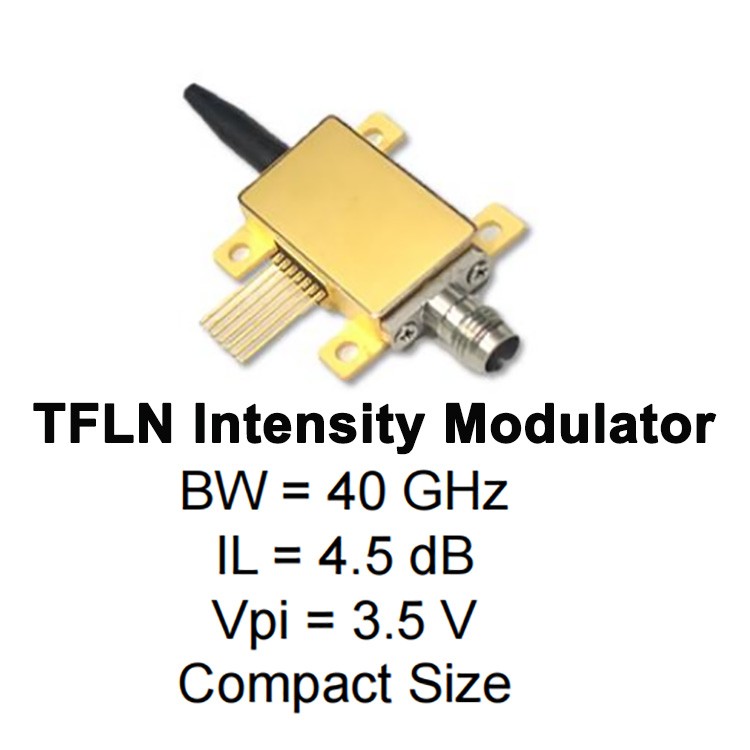
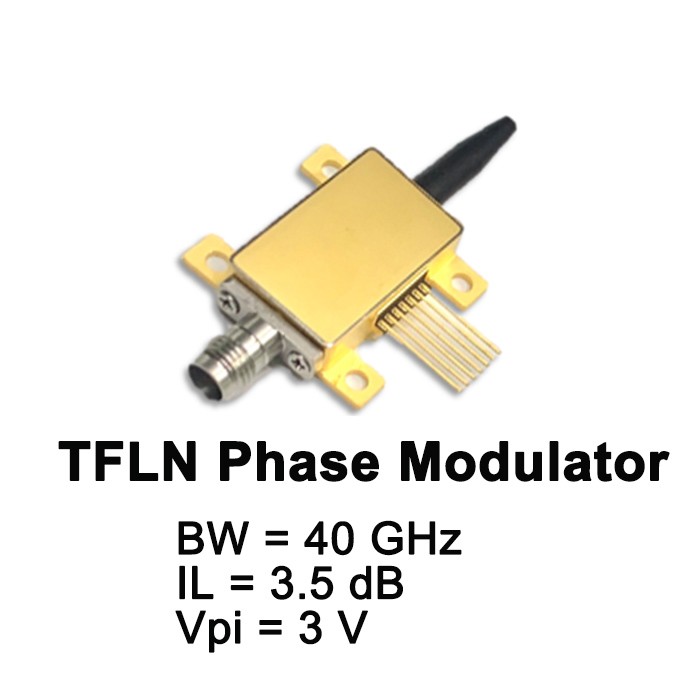
.jpg)
